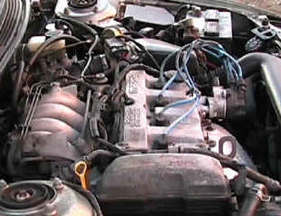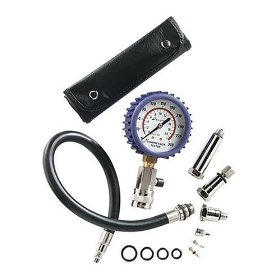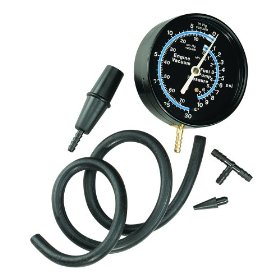Engine Runs Rough

Let us not forget that the engine runs rough condition can be caused by basic car problems. Many times professional and do it yourself auto mechanics start searching for answers in the vehicles high tech areas.
In many cases, the car problem is located in the most basic principles of engine operation.
Not all engine performance problems are directly related to on-board computers, throttle position sensors, fuel injectors or other fancy electronic systems.
This is the reason that all types of mechanics will still need to understand basic engine operation, as well as time tested engine testing procedures.
These basic tests are an important part of modern day engine troubleshooting and this will not change for some time. Well at least not until the electric vehicle is the only car on the roadways.
The engine runs rough
4 stroke internal combustion engines use compression of the air fuel mixture to maximize the power produced. The upward movement of the piston on the compression stroke will compress the air fuel mixture within the combustion chamber providing an easy to ignite mixture.
An engine with low compression will run rough, and will most likely have a noticeable lack of power.
Not to mention turning on the check engine light due to high engine emissions that will for sure fail the emission tests that are required in most states.

A compression gauge is used to check the cylinders ability to seal against high pressures. This is an easy to use inexpensive tool that comes with instructions on how to use it.
Before conducting a compression test, it is recommended to disable the ignition and also the fuel system.
You should also find a good and reliable way to hold open the throttle plates.
Even better would be the wide open throttle position to allow the maximum amount of air to enter the cylinder during the compression test.
Why engines run rough?
In a perfect world each cylinder of an internal combustion engine will produce the same amount of vacuum. This is why when you are diagnosing the engine runs rough condition a quick vacuum test is recommended.

When you perform this test the vacuum gauge readings should be steady and give a reading of about 20 inches of mercury.
You can check your auto repair manual for your exact specification which may vary slightly due to compression ratio of your specific engine.
If one cylinder sucks less than the others the needle of the vacuum gauge tester will fluctuate.
When vacuum tests are used on engines that are misfiring, the intensity of the fluctuation of the needle on the vacuum gauge indicates the severity of the mechanical engine problem.
Wild fluctuations may indicate a problem on multiple cylinders. Steady slow fluctuations usually mean a problem on one cylinder.
If the vacuum tester reads low all the time let’s say a reading of 10 inches and is steady as a rock, this could be a sign of a clogged exhaust system. A common car problem that would cause these types of readings is a catalytic convertor problem.
The honey comb catalyst can become damaged and break up and turn sideways severely restricting exhaust flow. If the engine does not breathe well on both inhale (intake) and exhale (exhaust) severe engine health problems may result.
When your engine runs rough it’s hard to enjoy the ride. But also your fuel consumption may increase at the same time your losing power. The exact opposite of what we all expect from our automobiles.
Find out more about the basics of engine operation and how this knowledge can help you diagnose car problems. As well as common tests used by professional mechanics. Discover the You Fix Cars website and my page about rough engine idle.
Or head on back to the main page and look through recent posts on the auto repair information blog.

